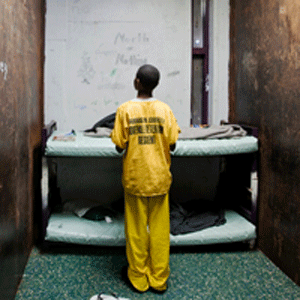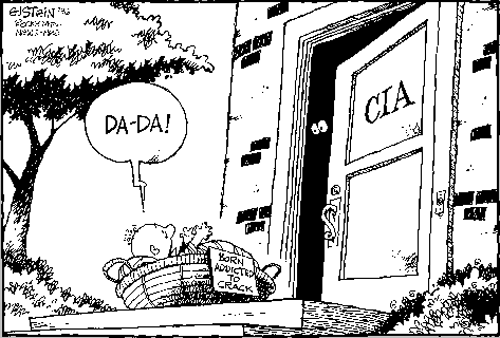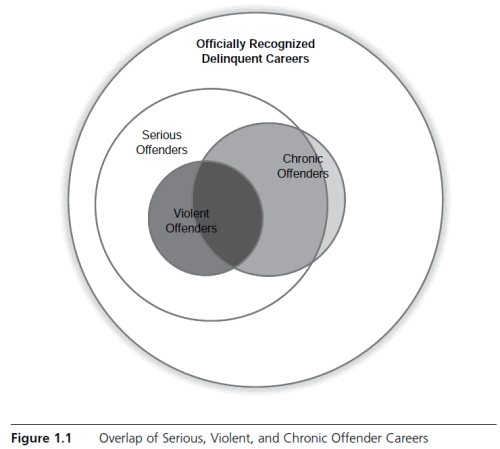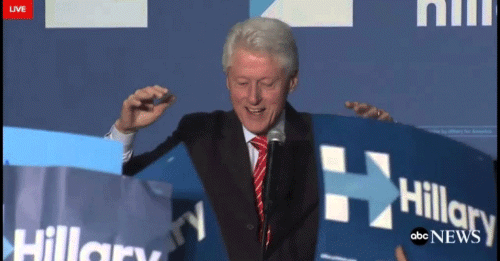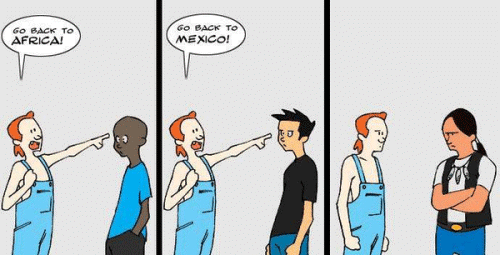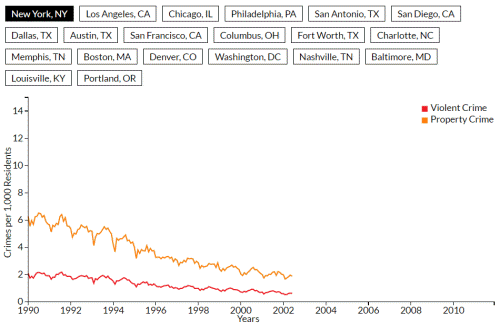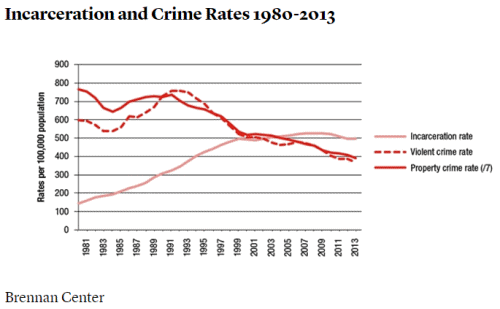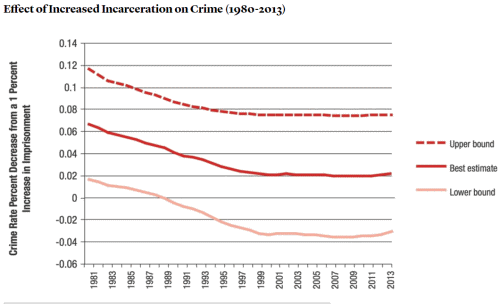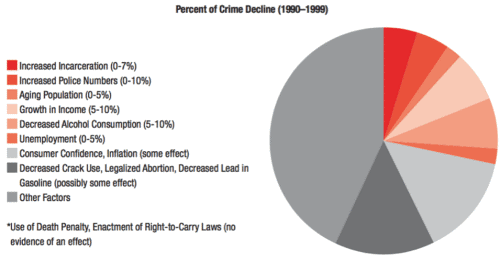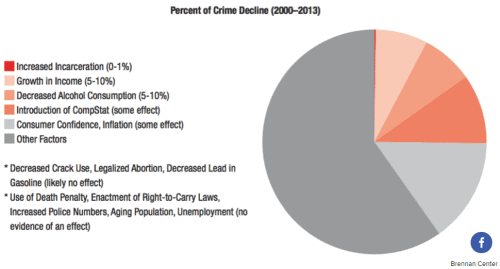Lead: America's Real Criminal Element. New Research Finds Lead is the Hidden Villain Behind Violent Crime, Lower IQs, and Even the ADHD Epidemic. And Fixing the Problem is a Lot Cheaper Than Doing Nothing.by Kevin Drum
Mother Jones
January/February 2013 Issue
NOTICE: THIS WORK MAY BE PROTECTED BY COPYRIGHTYOU ARE REQUIRED TO READ
THE COPYRIGHT NOTICE AT THIS LINK BEFORE YOU READ THE FOLLOWING WORK, THAT IS AVAILABLE SOLELY FOR PRIVATE STUDY, SCHOLARSHIP OR RESEARCH PURSUANT TO 17 U.S.C. SECTION 107 AND 108. IN THE EVENT THAT THE LIBRARY DETERMINES THAT UNLAWFUL COPYING OF THIS WORK HAS OCCURRED, THE LIBRARY HAS THE RIGHT TO BLOCK THE I.P. ADDRESS AT WHICH THE UNLAWFUL COPYING APPEARED TO HAVE OCCURRED. THANK YOU FOR RESPECTING THE RIGHTS OF COPYRIGHT OWNERS.
WHEN RUDY GIULIANI RAN FOR MAYOR of New York City in 1993, he campaigned on a platform of bringing down crime and making the city safe again. It was a comfortable position for a former federal prosecutor with a tough-guy image, but it was more than mere posturing. Since 1960, rape rates had nearly quadrupled, murder had quintupled, and robbery had grown fourteenfold. New Yorkers felt like they lived in a city under siege.
Throughout the campaign, Giuliani embraced a theory of crime fighting called "broken windows," popularized a decade earlier by James Q. Wilson and George L. Kelling in an influential article in The Atlantic. "If a window in a building is broken and is left unrepaired," they observed, "all the rest of the windows will soon be broken." So too, tolerance of small crimes would create a vicious cycle ending with entire neighborhoods turning into war zones. But if you cracked down on small crimes, bigger crimes would drop as well.
Giuliani won the election, and he made good on his crime-fighting promises by selecting Boston police chief Bill Bratton as the NYPD's new commissioner. Bratton had made his reputation as head of the New York City Transit Police, where he aggressively applied broken-windows policing to turnstile jumpers and vagrants in subway stations. With Giuliani's eager support, he began applying the same lessons to the entire city, going after panhandlers, drunks, drug pushers, and the city's hated squeegee men. And more: He decentralized police operations and gave precinct commanders more control, keeping them accountable with a pioneering system called CompStat that tracked crime hot spots in real time.8: Spreading the WordThe daily press knew how to handle this story. So what if Science buried Nelson-Rees's report in the back pages under the stodgy title "Banded Marker Chromosomes as Indicators of Intraspecies Cellular Contamination." The newspapers, properly horrified, played it on page one with headlines more to the point:
CANCER WAR SET BACK
GOOF COSTS 20 YEARS OF RESEARCH
A line of human tumor cells used by laboratories around the world for more than 20 years may have invalidated millions of dollars worth of cancer research, according to a scientist's report .... As a result, says the author, Dr. Walter A. Nelson-Rees, checks are in order for dozens of laboratories engaged in cancer research. -- Los Angeles Herald Examiner
DEAD WOMAN'S CANCER CELLS SPREADING
Dr. Walter Nelson-Rees, one of the most experienced cell biologists in the world ... has reported that many cell lines are by no means what they are thought to be by the laboratories handling them. -- Miami Herald
A SHOCKER FOR SCIENTISTS
"The main situation has probably existed for years," said the main author of the report, Walter A. Nelson-Rees, a highly respected researcher. ... Nelson-Rees said the contaminating potential of the HeLa cells is well known, but that sufficient precautions against it have apparently not been taken. -- San Francisco Chronicle
All this publicity made no sense to a number of scientists. Why was Nelson-Rees taking bows now when Stan Gartler had dropped the original bomb in 1966?
Part of the reason was that Nelson-Rees's paper was printed in Science, one of the few technical journals that nonscientists, particularly reporters, find accessible. One section, prepared by the journal's news staff, was actually written in English, and in the 7 June 1974 issue, the section carried a story that translated Nelson-Rees's article beautifully. "If Nelson-Rees is right," wrote Barbara Culliton, "a lot of people may have been spending a lot of time and money on misguided research. If, for example, you are studying the properties of human breast tumor cells, hoping to find features that distinguish breast cells from others, and are, all the while, dealing unknowingly with cervical tumor cells, you've got a problem." That was plain enough even for a newspaper reporter to understand, and to embellish and bang out for the morning edition.
But what really made Nelson-Rees a media star was the dramatic background of his shocking results: "The War." In Gartler's day, HeLa contamination had been the dirty little family secret of the tissue culture crowd. Its broader impact was not obvious. In 1974, however, "The War" had been officially declared and raging for several years. Everybody knew that the nation's most brilliant medical experts were at this very moment working feverishly against the scourge of cancer. It was a national priority.
Nelson-Rees's message made this large and serious effort seem a little silly. Sure, the institute was spending millions of dollars sending its brave recruits over the top against the enemy. But it turns out our boys were shooting with blanks!--
"Goof" Costs 65 Years to Infinity of Cancer Research. Excerpt From: "
A Conspiracy of Cells: One Woman's Immortal Legacy and the Medical Scandal It Caused", by Michael Gold
The results were dramatic. In 1996, the New York Times reported that crime had plunged for the third straight year, the sharpest drop since the end of Prohibition.
Since 1993, rape rates had dropped 17 percent, assault 27 percent, robbery 42 percent, and murder an astonishing 49 percent. Giuliani was on his way to becoming America's Mayor and Bratton was on the cover of Time. It was a remarkable public policy victory.
Hernandez reveals publicly for the first time that the downgrading of crimes to manipulate statistics allowed a man to commit six sexual assaults in a Washington Heights neighborhood in 2002 before he was finally caught after his seventh attack.
The initial six crimes, committed over a two-month period, went unnoticed by 33rd Precinct detectives, Hernandez says, because patrol supervisors had improperly labeled most of them as misdemeanors. It was only through a lucky break—an alert neighbor spotted the suspect pushing his seventh victim into her apartment—that the rapist, Daryl Thomas, was finally captured.
After his arrest, Hernandez persuaded Thomas to detail his earlier crimes. The detective then combed through stacks of crime complaint reports to identify the pattern of violence.
Hernandez learned that most of the victims' complaints in the prior assaults had been classified as criminal trespassing, so the incidents never reached the detective squad and, in turn, were never declared a pattern, which would have triggered an intense campaign to capture the perpetrator.
He says Thomas told him that with each new assault, his brazenness and level of violence increased: "I asked him, 'Weren't you ever afraid that you would get caught in any of these locations?' He goes 'Nah. I looked around, I never saw any cops,' " Hernandez says. "What they do is continue to hide these complaint reports, and what happens is no one is alerted that they have a serious crime pattern in those areas."
A Manhattan jury convicted Thomas in five cases on first-degree attempted rape, robbery, burglary, and sexual assault charges. He is currently serving a 50-year sentence in a state prison in Romulus, New York.
No police official was ever disciplined for misclassifying the complaints. Not only did Police Commissioner Ray Kelly allow the precinct commander, then Captain Jason Wilcox, to stay on, but he promoted him twice: Wilcox is now an Inspector and the commanding officer of the Manhattan Transit Bureau....
In addition to the Thomas case, the Voice series has documented a policy of refusing to take robbery complaints from some victims, and includes references to a dozen instances of crime complaint manipulation in the 81st Precinct. Subsequent Web reports have contained evidence of additional manipulations. Other Voice Web reports document an attempted rape of the journalist Debbie Nathan that was downgraded to forcible touching in the 34th Precinct, and an attempted armed robbery report that disappeared in the 94th Precinct....
"It made no sense that there was no pattern," Hernandez says. "Then it dawned on me. They [precinct supervisors] are fudging numbers, misclassifying cases. So I start looking."...
But supervisors had made sure that the early reports were shaded to keep them from being filed as serious, felonious crimes. "They look to eliminate certain elements in the narrative. One word or two words can make the charge into a misdemeanor."...
Hernandez found out sometime later that a detective sergeant in the squad had noticed the similarity of the incidents, but when he brought it to the attention of the squad commander and the precinct commander, he was rebuffed.
"He told them, 'You have a predator out there,' and they said, 'Keep your mouth shut,' " Hernandez says. "He told them, 'You keep on believing that, it's going to blow up in your face. And it would get ugly if people found out about it.' They didn't listen."...
Professors John Eterno of Molloy College and Eli Silverman of John Jay College have released a new study based on a survey of hundreds of retired NYPD supervisors, which offers yet more evidence of the practice of downgrading criminal complaints. The study, to be published in the International Journal of Police Science and Management, found that pressure to downgrade crime complaints grew as a result of the CompStat model, which holds precinct commanders accountable for crime in their areas....
Supervisors spoke of precinct commanders going to crime scenes to get the victim to change his story, the survey found....
The Thomas case, Hernandez says, was just one of many questionable things he observed during his career.
He says he had a robbery case that someone downgraded to petit larceny and his signature was forged to make it appear that he himself had downgraded the crime. The forgery was discovered after a paralegal from the Manhattan D.A.'s Office obtained the case file from Police Headquarters in preparation for the trial....
It got to the point, he says, that he would enter the complaints himself into the computer system. But that still didn't solve the problem because precinct supervisors would go back into the system and alter the reports. "Or they would come to me and tell me to change it, and I would refuse because that's not a lawful order," he says. "If that didn't work, they would complain to the squad lieutenant and try to manipulate him."
-- NYPD Tapes 3: A Detective Comes Forward About Downgraded Sexual Assaults, by Graham Rayman
But even more remarkable is what happened next. Shortly after Bratton's star turn, political scientist John DiIulio warned that the echo of the baby boom would soon produce a demographic bulge of millions of young males that he famously dubbed "juvenile super-predators." Other criminologists nodded along. But even though the demographic bulge came right on schedule, crime continued to drop. And drop. And drop. By 2010, violent crime rates in New York City had plunged 75 percent from their peak in the early '90s.
All in all, it seemed to be a story with a happy ending, a triumph for Wilson and Kelling's theory and Giuliani and Bratton's practice. And yet, doubts remained. For one thing, violent crime actually peaked in New York City in 1990, four years before the Giuliani-Bratton era. By the time they took office, it had already dropped 12 percent.
Second, and far more puzzling, it's not just New York that has seen a big drop in crime. In city after city, violent crime peaked in the early '90s and then began a steady and spectacular decline. Washington, DC, didn't have either Giuliani or Bratton, but its violent crime rate has dropped 58 percent since its peak. Dallas' has fallen 70 percent. Newark: 74 percent. Los Angeles: 78 percent.
There must be more going on here than just a change in policing tactics in one city. But what?
Compstat crime reduction efficacy is frequently advocated by police administrators, several of whom moved from the NYPD to head other city police departments. Compstat’s introduction in New Orleans, for example, corresponded with a reported decline in murders from 421 in 1994, diving 55 per cent in 1999 to 162. Minneapolis’s version of Compstat, CODEFOR (Computer Optimised Deployment-focus on Results), has been credited for a double-digit decrease in homicides, aggravated assaults, robberies, burglaries and auto thefts between 1998 and 1999 (Anderson, 2001, p. 4). In 2000, Compstat was introduced in Baltimore by its new chief, a former NYPD deputy police commissioner. By the end of the year, the city experienced below 300 homicides for the first time in 20 years, accompanied by an overall crime drop of 25 per cent (Anderson, p. 4; Clines, 2001, p. 15; Weissenstein, 2003, p. 27). Between 1999 and 2001, Baltimore’s overall violent crime declined 24 per cent, homicides dropped 15 per cent, shootings fell 34 per cent, robberies dropped 28 per cent, rapes 20 per cent and assaults 21 per cent (Henry, 2002, p. 307). Philadelphia’s former police commissioner, another former NYPD deputy police commissioner, attributed a decline in the city’s crime to Compstat-driven policing.
On the other hand, concerns have been raised in many jurisdictions that Compstat has served as a catalyst to inaccurate law enforcement statistical measurement (Long & Silverman, 2005; Manning, 2001; Willis et al., 2003b). When this type of system becomes excessively supervised, whether within a highly centralised organisation or from external political or hierarchical organisations, the consequences can be alarming. Subordinate units will naturally concentrate on those items being measured. Or, as the saying goes, ‘what gets measured gets done’. This can lead to crime statistics manipulation and/or downgrading, which has been reported in numerous locales including Philadelphia, Atlanta (Hart, 2004, p. 6), New Orleans (Ritea, 2003a, p. 1, 2003b, p. 1), New York (Gardiner & Levitt, 2003, p. 8; Parascandola & Levitt, 2004, p. 5) and Broward County, Florida (Hernandez, O’Boye, & O’Neill, 2004, p. 9). In Philadelphia, charges of altered crime reports emerged after the police department introduced Compstat. ‘If a person was punched in the eye, it might have been written up as a hospital report, so it didn’t reflect a crime had occurred’, reported one Philadelphia police official (Webber & Robinson, 2003).
-- The NYPD’s Compstat: compare statistics or compose statistics?, by John A. Eterno and Eli B. Silverman
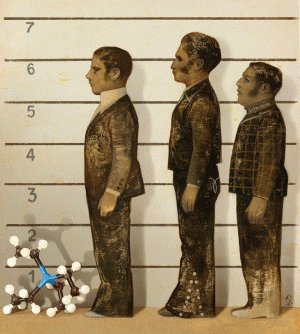 Illustration: Gérard DuBois
Illustration: Gérard DuBoisTHERE ARE, IT TURNS OUT, plenty of theories. When I started research for this story, I worked my way through a pair of thick criminology tomes. One chapter regaled me with the "exciting possibility" that it's mostly a matter of economics: Crime goes down when the economy is booming and goes up when it's in a slump. Unfortunately, the theory doesn't seem to hold water—for example, crime rates have continued to drop recently despite our prolonged downturn.
Another chapter suggested that crime drops in big cities were mostly a reflection of the crack epidemic of the '80s finally burning itself out. A trio of authors identified three major "drug eras" in New York City, the first dominated by heroin, which produced limited violence, and the second by crack, which generated spectacular levels of it. In the early '90s, these researchers proposed, the children of CrackGen switched to marijuana, choosing a less violent and more law-abiding lifestyle. As they did, crime rates in New York and other cities went down.
Another chapter told a story of demographics: As the number of young men increases, so does crime. Unfortunately for this theory, the number of young men increased during the '90s, but crime dropped anyway.
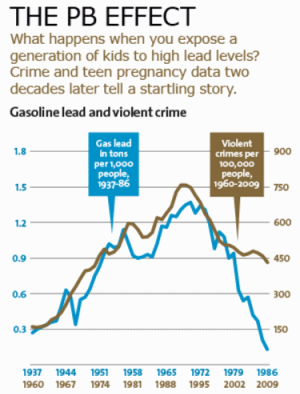 Chart: The PB Effect
Chart: The PB Effect
Top: Rick Nevin, USGS, DOJ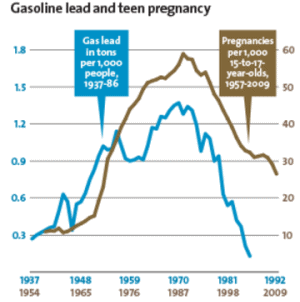 Bottom: Rick Nevin, Guttmacher Institute, CDC
Bottom: Rick Nevin, Guttmacher Institute, CDCThere were chapters in my tomes on the effect of prison expansion. On guns and gun control. On family. On race. On parole and probation. On the raw number of police officers. It seemed as if everyone had a pet theory. In 1999, economist Steven Levitt, later famous as the coauthor of Freakonomics, teamed up with John Donohue to suggest that crime dropped because of Roe v. Wade; legalized abortion, they argued, led to fewer unwanted babies, which meant fewer maladjusted and violent young men two decades later.
But there's a problem common to all of these theories: It's hard to tease out actual proof. Maybe the end of the crack epidemic contributed to a decline in inner-city crime, but then again, maybe it was really the effect of increased incarceration, more cops on the beat, broken-windows policing, and a rise in abortion rates 20 years earlier. After all, they all happened at the same time.
To address this problem, the field of econometrics gives researchers an enormous toolbox of sophisticated statistical techniques. But, notes statistician and conservative commentator Jim Manzi in his recent book Uncontrolled, econometrics consistently fails to explain most of the variation in crime rates. After reviewing 122 known field tests, Manzi found that only 20 percent demonstrated positive results for specific crime-fighting strategies, and none of those positive results were replicated in follow-up studies.
So we're back to square one. More prisons might help control crime, more cops might help, and better policing might help. But the evidence is thin for any of these as the main cause. What are we missing?
Experts often suggest that crime resembles an epidemic. But what kind? Karl Smith, a professor of public economics and government at the University of North Carolina-Chapel Hill, has a good rule of thumb for categorizing epidemics: If it spreads along lines of communication, he says, the cause is information. Think Bieber Fever. If it travels along major transportation routes, the cause is microbial. Think influenza. If it spreads out like a fan, the cause is an insect. Think malaria. But if it's everywhere, all at once—as both the rise of crime in the '60s and '70s and the fall of crime in the '90s seemed to be—the cause is a molecule.A molecule? That sounds crazy. What molecule could be responsible for a steep and sudden decline in violent crime?
Well, here's one possibility: Pb(CH2CH3)4.
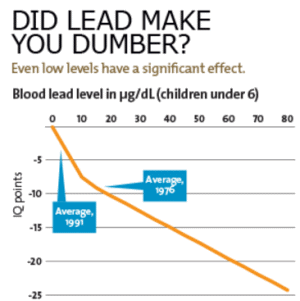 Chart: Did Lead Make You Dumber?
Chart: Did Lead Make You Dumber?
Rick Nevin/CDCIN 1994, RICK NEVIN WAS A CONSULTANT working for the US Department of Housing and Urban Development on the costs and benefits of removing lead paint from old houses. This has been a topic of intense study because of the growing body of research linking lead exposure in small children with a whole raft of complications later in life, including lower IQ, hyperactivity, behavioral problems, and learning disabilities.
But as Nevin was working on that assignment, his client suggested they might be missing something. A recent study had suggested a link between childhood lead exposure and juvenile delinquency later on. Maybe reducing lead exposure had an effect on violent crime too?
That tip took Nevin in a different direction.
The biggest source of lead in the postwar era, it turns out, wasn't paint. It was leaded gasoline. And if you chart the rise and fall of atmospheric lead caused by the rise and fall of leaded gasoline consumption, you get a pretty simple upside-down U: Lead emissions from tailpipes rose steadily from the early '40s through the early '70s, nearly quadrupling over that period. Then, as unleaded gasoline began to replace leaded gasoline, emissions plummeted.Gasoline lead may explain as much as 90 percent of the rise and fall of violent crime over the past half century.
Intriguingly, violent crime rates followed the same upside-down U pattern. The only thing different was the time period: Crime rates rose dramatically in the '60s through the '80s, and then began dropping steadily starting in the early '90s. The two curves looked eerily identical, but were offset by about 20 years.
So Nevin dove in further, digging up detailed data on lead emissions and crime rates to see if the similarity of the curves was as good as it seemed. It turned out to be even better: In a 2000 paper (PDF) he concluded that if you add a lag time of 23 years, lead emissions from automobiles explain 90 percent of the variation in violent crime in America.
Toddlers who ingested high levels of lead in the '40s and '50s really were more likely to become violent criminals in the '60s, '70s, and '80s.And with that we have our molecule: tetraethyl lead, the gasoline additive invented by General Motors in the 1920s to prevent knocking and pinging in high-performance engines. As auto sales boomed after World War II, and drivers in powerful new cars increasingly asked service station attendants to "fill 'er up with ethyl," they were unwittingly creating a crime wave two decades later.
It was an exciting conjecture, and it prompted an immediate wave of…nothing. Nevin's paper was almost completely ignored, and in one sense it's easy to see why—
Nevin is an economist, not a criminologist, and his paper was published in Environmental Research, not a journal with a big readership in the criminology community. What's more, a single correlation between two curves isn't all that impressive, econometrically speaking. Sales of vinyl LPs rose in the postwar period too, and then declined in the '80s and '90s. Lots of things follow a pattern like that. So no matter how good the fit, if you only have a single correlation it might just be a coincidence. You need to do something more to establish causality.
As it turns out, however, a few hundred miles north someone was doing just that. In the late '90s, Jessica Wolpaw Reyes was a graduate student at Harvard casting around for a dissertation topic that eventually became a study she published in 2007 as a public health policy professor at Amherst. "I learned about lead because I was pregnant and living in old housing in Harvard Square," she told me, and after attending a talk where future Freakonomics star Levitt outlined his abortion/crime theory, she started thinking about lead and crime. Although the association seemed plausible, she wanted to find out whether increased lead exposure caused increases in crime. But how?
In states where consumption of leaded gasoline declined slowly, crime declined slowly. Where it declined quickly, crime declined quickly.
The answer, it turned out, involved "several months of cold calling" to find lead emissions data at the state level. During the '70s and '80s, the introduction of the catalytic converter, combined with increasingly stringent Environmental Protection Agency rules, steadily reduced the amount of leaded gasoline used in America, but Reyes discovered that this reduction wasn't uniform. In fact, use of leaded gasoline varied widely among states, and this gave Reyes the opening she needed. If childhood lead exposure really did produce criminal behavior in adults, you'd expect that in states where consumption of leaded gasoline declined slowly, crime would decline slowly too. Conversely, in states where it declined quickly, crime would decline quickly. And that's exactly what she found.
Meanwhile, Nevin had kept busy as well, and in 2007 he published a new paper looking at crime trends around the world (PDF). This way, he could make sure the close match he'd found between the lead curve and the crime curve wasn't just a coincidence.
Sure, maybe the real culprit in the United States was something else happening at the exact same time, but what are the odds of that same something happening at several different times in several different countries?Nevin collected lead data and crime data for Australia and found a close match. Ditto for Canada. And Great Britain and Finland and France and Italy and New Zealand and West Germany. Every time, the two curves fit each other astonishingly well. When I spoke to Nevin about this, I asked him if he had ever found a country that didn't fit the theory. "No," he replied. "Not one."
In Australia, Compstat-like performance management systems were also modelled after New York’s Compstat. Queensland’s Police Service version of Compstat is known as Operational Performance Review (OPR). One study found the introduction of OPR ‘associated with a significant decrease in the total number of reported offences’ (Mazerolle, Rombouts, & McBroom, 2007).
The country’s largest police force, the New South Wales police, developed its Operations and Crime Review (OCR) management system after visits to NYPD’s Compstat (Davis & Coleman, 2000). A previous commissioner stressed that OCR policing is data driven, ‘uncompromising difficult and stressful’ (Ryan, 2000 cited in Kennedy 2010).
Like elsewhere, Australian performance-based policing is controversial. On the one hand, for example, two Australian scholars’ evaluation of the OCR found this process to be effective in reducing three of the four offence categories studied (Chilvers & Weatherburn, 2004). Yet a 2000 evaluation by an independent consulting group (Hay Group Consulting Consortium, 2000) found communication to be largely a one-way process with little feedback to commanders, ‘reinforcing the culture of fear and punishment’. The following year, the deputy commissioner resigned after he announced that crime was falling when the Bureau of Crime Statistics said it was increasing (Kennedy, 2000, p. 27).
Australia’s National Uniform Crime Statistics Committee reported variations in crime statistics due to ‘. . . the extent of unreported crime; inadequacies in offence definitions, counting rules and offence classifications; procedural differences such as the offences under which an offender may be charged; differences in the way statistics are compiled as a result of the lack of uniformity in systems used and noncompliance with the rules governing the collation of statistics’ (Hallam, 2009, p. 55) Carach and Makkai (2002) found that recorded crime statistics in the State of Victoria varied depending on whether an evidential or prima facie approach was applied by officers involved in the crime recording process.
-- The NYPD’s Compstat: compare statistics or compose statistics?, by John A. Eterno and Eli B. Silverman
Just this year, Tulane University researcher Howard Mielke published a paper with demographer Sammy Zahran on the correlation of lead and crime at the city level. They studied six US cities that had both good crime data and good lead data going back to the '50s, and they found a good fit in every single one. In fact, Mielke has even studied lead concentrations at the neighborhood level in New Orleans and shared his maps with the local police. "When they overlay them with crime maps," he told me, "they realize they match up."
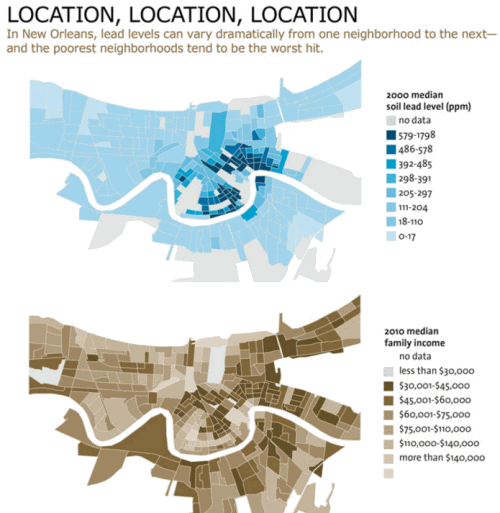
Put all this together and you have an astonishing body of evidence. We now have studies at the international level, the national level, the state level, the city level, and even the individual level.
Groups of children have been followed from the womb to adulthood, and higher childhood blood lead levels are consistently associated with higher adult arrest rates for violent crimes. All of these studies tell the same story: Gasoline lead is responsible for a good share of the rise and fall of violent crime over the past half century.When differences of atmospheric lead density between big and small cities largely went away, so did the difference in murder rates.
Like many good theories, the gasoline lead hypothesis helps explain some things we might not have realized even needed explaining. For example, murder rates have always been higher in big cities than in towns and small cities. We're so used to this that it seems unsurprising, but Nevin points out that it might actually have a surprising explanation—because big cities have lots of cars in a small area, they also had high densities of atmospheric lead during the postwar era. But as lead levels in gasoline decreased, the differences between big and small cities largely went away. And guess what? The difference in murder rates went away too. Today, homicide rates are similar in cities of all sizes. It may be that violent crime isn't an inevitable consequence of being a big city after all.
The gasoline lead story has another virtue too: It's the only hypothesis that persuasively explains both the rise of crime in the '60s and '70s and its fall beginning in the '90s. Two other theories—the baby boom demographic bulge and the drug explosion of the '60s—at least have the potential to explain both, but neither one fully fits the known data. Only gasoline lead, with its dramatic rise and fall following World War II, can explain the equally dramatic rise and fall in violent crime.
IF ECONOMETRIC STUDIES WERE ALL THERE were to the story of lead, you'd be justified in remaining skeptical no matter how good the statistics look. Even when researchers do their best—controlling for economic growth, welfare payments, race, income, education level, and everything else they can think of—
it's always possible that something they haven't thought of is still lurking in the background. But there's another reason to take the lead hypothesis seriously, and it might be the most compelling one of all: Neurological research is demonstrating that lead's effects are even more appalling, more permanent, and appear at far lower levels than we ever thought. For starters, it turns out that childhood lead exposure at nearly any level can seriously and permanently reduce IQ. Blood lead levels are measured in micrograms per deciliter, and levels once believed safe—65 μg/dL, then 25, then 15, then 10—are now known to cause serious damage. The EPA now says flatly that there is "no demonstrated safe concentration of lead in blood," and it turns out that even levels under 10 μg/dL can reduce IQ by as much as seven points. An estimated 2.5 percent of children nationwide have lead levels above 5 μg/dL.
But we now know that lead's effects go far beyond just IQ. Not only does lead promote apoptosis, or cell death, in the brain, but the element is also chemically similar to calcium. When it settles in cerebral tissue, it prevents calcium ions from doing their job, something that causes physical damage to the developing brain that persists into adulthood.
Only in the last few years have we begun to understand exactly what effects this has. A team of researchers at the University of Cincinnati has been following a group of 300 children for more than 30 years and recently performed a series of MRI scans that highlighted the neurological differences between subjects who had high and low exposure to lead during early childhood.
High childhood exposure damages a part of the brain linked to aggression control. The impact is greater among boys.
One set of scans found that lead exposure is linked to production of the brain's white matter—primarily a substance called myelin, which forms an insulating sheath around the connections between neurons. Lead exposure degrades both the formation and structure of myelin, and when this happens, says Kim Dietrich, one of the leaders of the imaging studies, "neurons are not communicating effectively." Put simply, the network connections within the brain become both slower and less coordinated.
A second study found that high exposure to lead during childhood was linked to a permanent loss of gray matter in the prefrontal cortex—a part of the brain associated with aggression control as well as what psychologists call "executive functions": emotional regulation, impulse control, attention, verbal reasoning, and mental flexibility. One way to understand this, says Kim Cecil, another member of the Cincinnati team, is that lead affects precisely the areas of the brain "that make us most human."
So lead is a double whammy: It impairs specific parts of the brain responsible for executive functions and it impairs the communication channels between these parts of the brain. For children like the ones in the Cincinnati study, who were mostly inner-city kids with plenty of strikes against them already, lead exposure was, in Cecil's words, an "additional kick in the gut." And one more thing: Although both sexes are affected by lead, the neurological impact turns out to be greater among boys than girls.
Other recent studies link even minuscule blood lead levels with attention deficit/hyperactivity disorder. Even at concentrations well below those usually considered safe—levels still common today—lead increases the odds of kids developing ADHD.
In other words, as Reyes summarized the evidence in her paper, even moderately high levels of lead exposure are associated with aggressivity, impulsivity, ADHD, and lower IQ. And right there, you've practically defined the profile of a violent young offender.Needless to say, not every child exposed to lead is destined for a life of crime. Everyone over the age of 40 was probably exposed to too much lead during childhood, and most of us suffered nothing more than a few points of IQ loss. But there were plenty of kids already on the margin, and millions of those kids were pushed over the edge from being merely slow or disruptive to becoming part of a nationwide epidemic of violent crime. Once you understand that, it all becomes blindingly obvious. Of course massive lead exposure among children of the postwar era led to larger numbers of violent criminals in the '60s and beyond. And of course when that lead was removed in the '70s and '80s, the children of that generation lost those artificially heightened violent tendencies.Police chiefs want to think what they do on a daily basis matters. And it does. But maybe not as much as they think.
But if all of this solves one mystery, it shines a high-powered klieg light on another: Why has the lead/crime connection been almost completely ignored in the criminology community? In the two big books I mentioned earlier, one has no mention of lead at all and the other has a grand total of two passing references. Nevin calls it "exasperating" that crime researchers haven't seriously engaged with lead, and Reyes told me that although the public health community was interested in her paper, criminologists have largely been AWOL. When I asked Sammy Zahran about the reaction to his paper with Howard Mielke on correlations between lead and crime at the city level, he just sighed. "I don't think criminologists have even read it," he said. All of this jibes with my own reporting. Before he died last year, James Q. Wilson—father of the broken-windows theory, and the dean of the criminology community—had begun to accept that lead probably played a meaningful role in the crime drop of the '90s. But he was apparently an outlier. None of the criminology experts I contacted showed any interest in the lead hypothesis at all.
Why not? Mark Kleiman, a public policy professor at the University of California-Los Angeles who has studied promising methods of controlling crime, suggests that because criminologists are basically sociologists, they look for sociological explanations, not medical ones. My own sense is that interest groups probably play a crucial role: Political conservatives want to blame the social upheaval of the '60s for the rise in crime that followed. Police unions have reasons for crediting its decline to an increase in the number of cops. Prison guards like the idea that increased incarceration is the answer. Drug warriors want the story to be about drug policy. If the actual answer turns out to be lead poisoning, they all lose a big pillar of support for their pet issue. And while lead abatement could be big business for contractors and builders, for some reason their trade groups have never taken it seriously.
More generally, we all have a deep stake in affirming the power of deliberate human action. When Reyes once presented her results to a conference of police chiefs, it was, unsurprisingly, a tough sell. "They want to think that what they do on a daily basis matters," she says. "And it does." But it may not matter as much as they think.
SO IS THIS ALL JUST AN INTERESTING history lesson? After all, leaded gasoline has been banned since 1996, so even if it had a major impact on violent crime during the 20th century, there's nothing more to be done on that front. Right?
Wrong. As it turns out, tetraethyl lead is like a zombie that refuses to die. Our cars may be lead-free today, but they spent more than 50 years spewing lead from their tailpipes, and all that lead had to go somewhere. And it did: It settled permanently into the soil that we walk on, grow our food in, and let our kids play around.
That's especially true in the inner cores of big cities, which had the highest density of automobile traffic. Mielke has been studying lead in soil for years, focusing most of his attention on his hometown of New Orleans, and he's measured 10 separate census tracts there with lead levels over 1,000 parts per million.
To get a sense of what this means, you have to look at how soil levels of lead typically correlate with blood levels, which are what really matter. Mielke has studied this in New Orleans, and it turns out that the numbers go up very fast even at low levels. Children who live in neighborhoods with a soil level of 100 ppm have average blood lead concentrations of 3.8 μg/dL—a level that's only barely tolerable. At 500 ppm, blood levels go up to 5.9 μg/dL, and at 1,000 ppm they go up to 7.5 μg/dL. These levels are high enough to do serious damage.
"I know people who have move into gentrified neighborhoods and renovate everything. They create huge hazards for their kids."
Mielke's partner, Sammy Zahran, walked me through a lengthy—and hair-raising—presentation about the effect that all that old gasoline lead continues to have in New Orleans. The very first slide describes the basic problem: Lead in soil doesn't stay in the soil. Every summer, like clockwork, as the weather dries up, all that lead gets kicked back into the atmosphere in a process called resuspension. The zombie lead is back to haunt us.Mark Laidlaw, a doctoral student who has worked with Mielke, explains how this works: People and pets track lead dust from soil into houses, where it's ingested by small children via hand-to-mouth contact. Ditto for lead dust generated by old paint inside houses. This dust cocktail is where most lead exposure today comes from.
Paint hasn't played a big role in our story so far, but that's only because it didn't play a big role in the rise of crime in the postwar era and its subsequent fall. Unlike gasoline lead, lead paint was a fairly uniform problem during this period, producing higher overall lead levels, especially in inner cities, but not changing radically over time. (It's a different story with the first part of the 20th century, when use of lead paint did rise and then fall somewhat dramatically. Sure enough, murder rates rose and fell in tandem.)
And just like gasoline lead, a lot of that lead in old housing is still around. Lead paint chips flaking off of walls are one obvious source of lead exposure, but an even bigger one, says Rick Nevin, are old windows. Their friction surfaces generate lots of dust as they're opened and closed. (Other sources—lead pipes and solder, leaded fuel used in private aviation, and lead smelters—account for far less.)
We know that the cost of all this lead is staggering, not just in lower IQs, delayed development, and other health problems, but in increased rates of violent crime as well. So why has it been so hard to get it taken seriously?
There are several reasons. One of them was put bluntly by Herbert Needleman, one of the pioneers of research into the effect of lead on behavior. A few years ago, a reporter from the Baltimore City Paper asked him why so little progress had been made recently on combating the lead-poisoning problem. "Number one," he said without hesitation, "it's a black problem." But it turns out that this is an outdated idea. Although it's true that lead poisoning affects low-income neighborhoods disproportionately, it affects plenty of middle-class and rich neighborhoods as well. "It's not just a poor-inner-city-kid problem anymore," Nevin says. "I know people who have moved into gentrified neighborhoods and immediately renovate everything. And they create huge hazards for their kids."
Tamara Rubin, who lives in a middle-class neighborhood in Portland, Oregon, learned this the hard way when two of her children developed lead poisoning after some routine home improvement in 2005. A few years later, Rubin started the Lead Safe America Foundation, which advocates for lead abatement and lead testing. Her message: If you live in an old neighborhood or an old house, get tested. And if you renovate, do it safely.
Another reason that lead doesn't get the attention it deserves is that too many people think the problem was solved years ago. They don't realize how much lead is still hanging around, and they don't understand just how much it costs us.
It's difficult to put firm numbers to the costs and benefits of lead abatement. But for a rough idea, let's start with the two biggest costs. Nevin estimates that there are perhaps 16 million pre-1960 houses with lead-painted windows, and replacing them all would cost something like $10 billion per year over 20 years. Soil cleanup in the hardest-hit urban neighborhoods is tougher to get a handle on, with estimates ranging from $2 to $36 per square foot. A rough extrapolation from Mielke's estimate to clean up New Orleans suggests that a nationwide program might cost another $10 billion per year.
We can either get rid of the remaining lead, or we can wait 20 years and then lock up all the kids who've turned into criminals.
So in round numbers that's about $20 billion per year for two decades. But the benefits would be huge. Let's just take a look at the two biggest ones. By Mielke and Zahran's estimates, if we adopted the soil standard of a country like Norway (roughly 100 ppm or less), it would bring about $30 billion in annual returns from the cognitive benefits alone (higher IQs, and the resulting higher lifetime earnings). Cleaning up old windows might double this. And violent crime reduction would be an even bigger benefit. Estimates here are even more difficult, but Mark Kleiman suggests that a 10 percent drop in crime—a goal that seems reasonable if we get serious about cleaning up the last of our lead problem—could produce benefits as high as $150 billion per year.
Put this all together and the benefits of lead cleanup could be in the neighborhood of $200 billion per year. In other words, an annual investment of $20 billion for 20 years could produce returns of 10-to-1 every single year for decades to come. Those are returns that Wall Street hedge funds can only dream of.
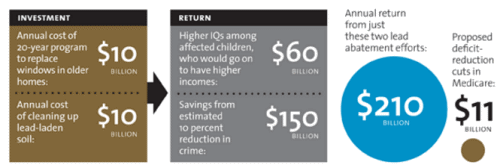
There's a flip side to this too. At the same time that we should reassess the low level of attention we pay to the remaining hazards from lead, we should probably also reassess the high level of attention we're giving to other policies. Chief among these is the prison-building boom that started in the mid-'70s. As crime scholar William Spelman wrote a few years ago, states have "doubled their prison populations, then doubled them again, increasing their costs by more than $20 billion per year"—money that could have been usefully spent on a lot of other things. And while some scholars conclude that the prison boom had an effect on crime, recent research suggests that rising incarceration rates suffer from diminishing returns: Putting more criminals behind bars is useful up to a point, but beyond that we're just locking up more people without having any real impact on crime. What's more, if it's true that lead exposure accounts for a big part of the crime decline that we formerly credited to prison expansion and other policies, those diminishing returns might be even more dramatic than we believe. We probably overshot on prison construction years ago; one doubling might have been enough. Not only should we stop adding prison capacity, but we might be better off returning to the incarceration rates we reached in the mid-'80s.
So this is the choice before us:
We can either attack crime at its root by getting rid of the remaining lead in our environment, or we can continue our current policy of waiting 20 years and then locking up all the lead-poisoned kids who have turned into criminals. There's always an excuse not to spend more money on a policy as tedious-sounding as lead abatement—budgets are tight, and research on a problem as complex as crime will never be definitive—but the association between lead and crime has, in recent years, become pretty overwhelming. If you gave me the choice, right now, of spending $20 billion less on prisons and cops and spending $20 billion more on getting rid of lead, I'd take the deal in a heartbeat. Not only would solving our lead problem do more than any prison to reduce our crime problem, it would produce smarter, better-adjusted kids in the bargain. There's nothing partisan about this, nothing that should appeal more to one group than another. It's just common sense. Cleaning up the rest of the lead that remains in our environment could turn out to be the cheapest, most effective crime prevention tool we have. And we could start doing it tomorrow.
Support for this story was provided by a grant from the Puffin Foundation Investigative Journalism Project.

